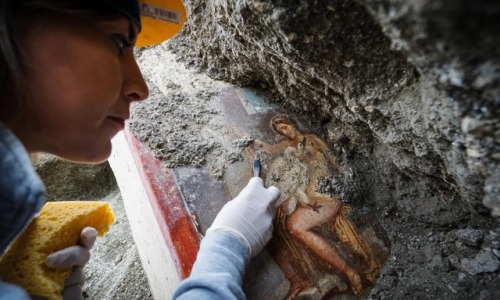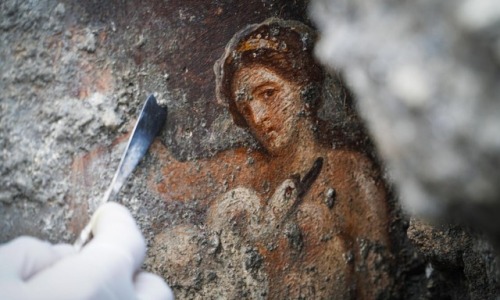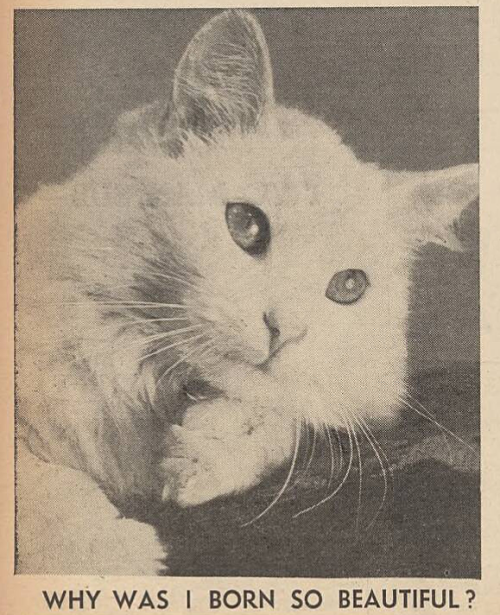a sideblog for everything i love and find interesting: philosophy, literature, cultural anthropology, folk history, folk horror, neuroscience, medicine and medical science, neuropsychology/psychiatry, ethnomusicology, art, literature, academia and so on. i am an amateur in every subject! this is just for my own personal interest in each subject :)
277 posts
Latest Posts by culturalanthropologist - Page 6

Top 5 Longreads of the Week
The Top 5 of the week has landed! This week our editors chose stories on:
-The underground beauty salons in Ukraine
-The fight for a wild butterfly population
-The quilters of Gee’s Bend, Alabama
-The culture of Criterion Collection
-The AI takeover in customer service
Read what made these stories stand out here.

The virus behind the common cold sore could put people at greater risk of Alzheimer's disease. A long-term study of more than a thousand 70-year-olds in Sweden has now found those exposed to the herpes simplex virus type 1 (HSV-1) face double the risk of developing dementia. The association stuck regardless of the two strongest known predictors of Alzheimer's disease today: age and a genetic variant called APOE-4. The findings are the latest to suggest that some common viral infections may be a neglected source of cognitive decline.
Continue Reading.
pssssst hey. hey. free and expansive database of folk and fairy tales. you can thank me later
So if you ain’t been following what’s been happening in LA…

These towers are the Ocean Wide Plaza. I think they sit in the middle of downtown Los Angeles. They are vacant. Basically a bunch of luxury apartments in a city filled with homeless. A bunch of taggers have been hitting this place up before the city demolishes these towers instead of actually putting people into them.
Honestly, I love graffiti and would rather look at this kind of art over any museum exhibit but that’s just me. Just wanted to share some news of some artistic expression.

The almost perfectly preserved 9,000 year old bison mummy was found on the shore of a lake in northern Siberia. Credit: Dr. Gennady Boeskorov

Knud Baade - Shipwreck (1839)

Dukha kid holding the head of a taimen fish. Taimen can grow up to a meter and a half long. They are sometimes called “river wolves” in Mongolia, because they lurk under the surface of the water and eat birds and small animals that come to the river to drink.


The World’s Loneliest Whale Sings the Loudest Song by Noor Hindi












medieval gender studies

In 1561 an innkeeper called Hew Draper was imprisoned in the Tower of London for sorcery. Whilst incarcerated he made these carvings in the walls which displayed astrological symbols and numbers.







Water For The People, Paul D’Amato

A team of researchers from the URV and the RMIT University (Australia) has designed and manufactured a surface that uses mechanical means to mitigate the infectious potential of viruses. Made of silicon, the artificial surface consists of a series of tiny spikes that damage the structure of viruses when they come into contact with it. The work is published in the journal ACS Nano. The research has revealed how these processes work and that they are 96% effective. Using this technology in environments in which there is potentially dangerous biological material would make laboratories easier to control and safer for the professionals who work there.
Continue Reading.









A landmark study has identified specific patterns of connections across the brain associated with symptoms of attention deficit hyperactivity disorder ( ADHD), highlighting the importace of considering diverse neurological functions in understanding the nature of the condition. While the study is far from unique in its attempts to identify physical characteristics of ADHD in the brain's wiring, its method does aim to improve on past efforts.
Continue Reading.

Shilatembo, Democratic Republic of the Congo
Traditional dancers perform as the remains of the slain Congolese independence leader Patrice Lumumba arrive in Shilatembo, where the leader was killed in 1961. The family of Lumumba buried his only known remains – a tooth – in the capital, Kinshasa, this week
Photograph: Guerchom Ndebo/AFP/Getty Images
“Medieval representations of women warriors do not always focus on women’s biological functions as evidence of a natural feminine inability to participate in combat. They do, however, often point to a basic incompatibility between women and war even as they represent successful women warriors. Icelandic sagas offer an example of this kind of representation. Recorded in the thirteenth century, sagas recount stories from around the time of the Christianization of Iceland, 900–1000. A number of sagas recount the stories of maiden warriors, young women who put on men’s clothing and participate in battle. These women are often successful in combat, sometimes they are ultimately defeated or even killed by their male adversaries, but they are generally reintegrated into traditional roles by the end of their stories—they marry and produce children. Hervör, Angantýr’s daughter, is one such maiden warrior. She is “as strong as a man; as soon as she could do anything for herself she trained herself more with bow and shield and sword than with needlework and embroidery.”
She goes to her father’s tomb, claims his sword (which belongs to her as his only child), disguises herself as a man, and enters the service of King Gudmund. She later joins the Vikings and goes out raiding, but she wearies of this life and goes home to do needlework. She is subsequently married to Höfund, son of King Gudmund. The extent to which these fictional accounts of women warriors were modeled on the actual experiences of women in war is unknown. Grave goods provide some clues about women’s participation in war, but the evidence is ambiguous. Weapons have been discovered in female graves from the Viking Age, and the grave goods may indicate that the woman buried with the arms used them in battle during her lifetime. However, the weapons may also have symbolic functions that do not imply that the buried woman actually used weapons, so archeological evidence cannot provide firm support for how closely sagas about women warriors may reflect the experiences of women in war.
Keep reading

Buryat Shaman, ca. 1904-17



Woman from Djelfa, Algeria, ca. 1900

the broddenbjerg god


researchers built wearable heart rate sensors powered by slime molds that had to be fed like Tamagotchis and literally everyone involved with the study began personifying their little heart rate friends

Vyacheslav Belov, Russia
Nightmare or salvation, nothingness or existence

3000 year old petroglyph of a man running away from a big snake. With erection. It is one of the many Rock carvings in Tanum, Sweden and was painted red so its easier for tourists to see.
Click for more artifacts


there was a free palestine moko jumbie at trinidad carnival i am in tears :,) 🇹🇹🇵🇸
(photography by maria nunes)

Charles Ray: Untitled (1973)


@el-shab-hussein @huzni











The Holdovers (2023)


New “Leda and the Swan” fresco uncovered @ Pompeii.

